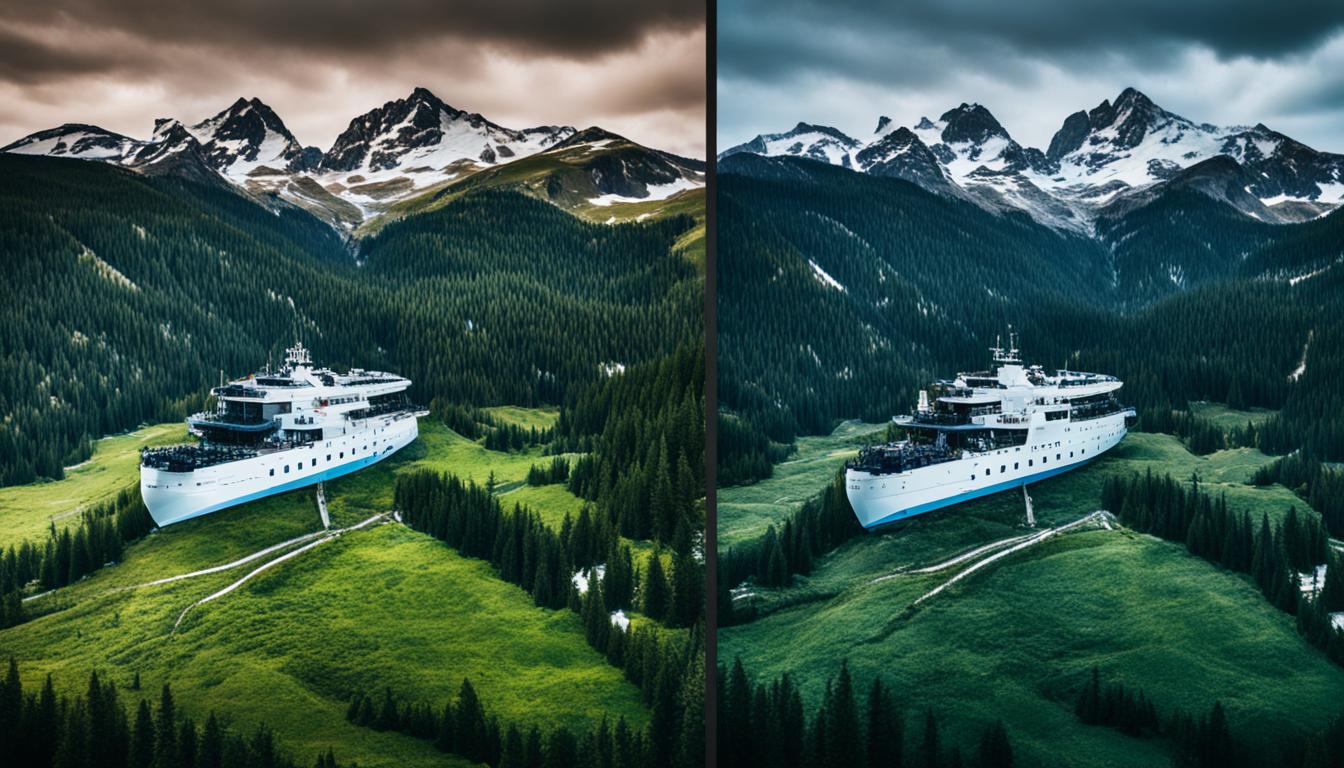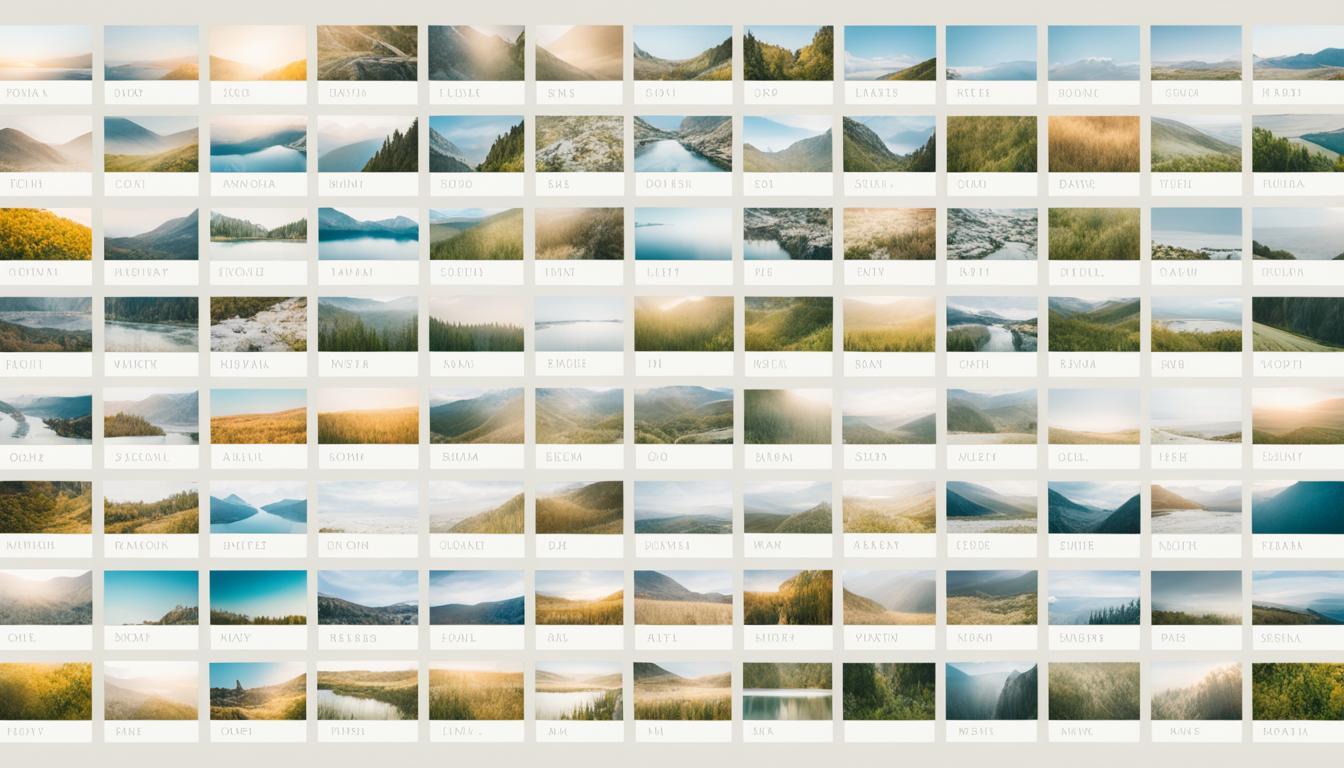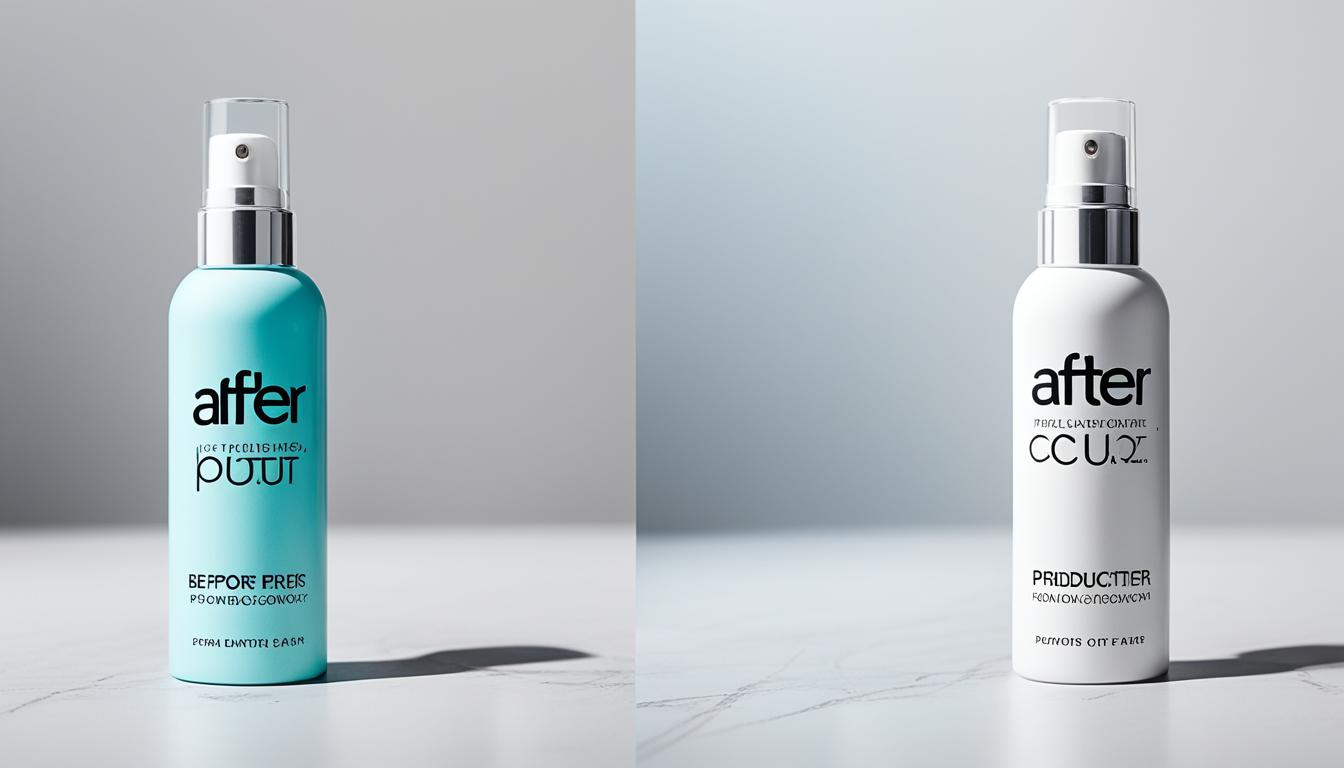The decision between shooting in RAW or JPEG is a common and important question for photographers. Understanding the differences between these two image formats is crucial for making informed decisions and maximizing the post-processing potential. Both RAW and JPEG have their advantages and disadvantages, and by exploring the distinctions, photographers can enhance their photography workflow and achieve the desired results.
In this article, we will delve into the basics of RAW and JPEG formats, highlight the advantages of shooting in JPEG, explore the power of RAW photography, discuss the pros and cons of shooting RAW, and provide guidance on when to shoot in RAW or JPEG based on different shooting situations. By the end, you will have a clear understanding of the RAW vs. JPEG decision and how it aligns with your photography goals.
Key Takeaways:
- Understanding the differences between RAW and JPEG formats is essential for photographers.
- Shooting in JPEG offers simplicity and convenience, with smaller file sizes and compatibility with various devices and platforms.
- RAW photography provides the ability to preserve maximum data and achieve high-quality results through extensive post-processing.
- Shooting in RAW has advantages such as retaining more detail and quality, but also comes with larger file sizes and the need for specialized post-processing software.
- The decision to shoot in RAW or JPEG depends on factors like available storage space, time constraints, and the desired level of control over the images.
The Basics: Understanding RAW and JPEG
When it comes to digital photography, RAW and JPEG are the two main image formats that photographers encounter. Each format has its unique characteristics and serves different purposes in the world of photography. In this section, we will delve into the basics of RAW and JPEG formats, exploring their key differences and understanding their significance.
RAW Format: Preserving Unedited Data
RAW format is synonymous with unedited data. When you shoot in RAW, you capture all the information recorded by the camera’s sensor without any alterations or compression. This format acts as a digital negative, enabling you to make extensive post-processing adjustments during the editing stage. With RAW, you have complete control over parameters such as exposure, white balance, and sharpness.
Let’s take a look at the main characteristics of the RAW format:
- Contain unprocessed data captured by the camera’s sensor
- Retain maximum details and dynamic range
- Allow extensive post-processing adjustments in software like Adobe Lightroom or Capture One
- Result in larger file sizes due to minimal compression
JPEG Format: Compressed and Ready-to-Use
JPEG, on the other hand, is a compressed format that is ready-to-use straight out of the camera. When you shoot in JPEG, the camera applies various settings and compresses the image to reduce file size. This compression helps create smaller files that are easy to store, share, and print without any additional editing.
Here are the key features of the JPEG format:
- Result from compressing RAW images
- Offer immediate usability without post-processing
- Smaller file sizes due to compression
- Compatible with a wide range of devices and online platforms
Understanding the differences between RAW and JPEG formats is crucial for photographers. It allows us to decide which format best suits our intentions and creative vision. By choosing the appropriate format, we can optimize our workflow and achieve the desired results.
Now that we have explored the characteristics of RAW and JPEG formats, we can move forward to examine the advantages of shooting in JPEG format. In the next section, we will discuss why shooting in JPEG is a popular choice for many photographers.
Advantages of Shooting in JPEG
When it comes to image formats, shooting in JPEG offers a range of advantages that make it a popular choice, especially for beginners and casual photographers. Let’s explore the benefits of shooting in JPEG:
- Easy to Use: JPEG files are incredibly user-friendly, making them accessible even to those new to photography. With no complex settings or adjustments required, photographers can focus on capturing the perfect shot without being overwhelmed by technicalities.
- Smaller File Sizes: One of the significant advantages of shooting in JPEG is the smaller file sizes it produces. The compression applied to JPEG files significantly reduces their size, allowing for more storage capacity on memory cards and hard drives. This means you can capture and save a larger number of photos without worrying about running out of space.
- Quick Editing: JPEG files are ready to use right out of the camera, eliminating the need for extensive post-processing. However, if you want to make basic adjustments such as cropping, adjusting exposure, or enhancing colors, you can still do so without significant loss in image quality. This makes JPEG files perfect for quick editing and sharing on social media platforms or websites.
Overall, shooting in JPEG provides simplicity, smaller file sizes, and the freedom to make quick edits when needed. This format is particularly ideal for beginners who want to capture and share their photos with ease.
“Shooting in JPEG offers simplicity and convenience, making it an appealing choice for beginners and casual photographers.”
The Power of RAW Photography
When it comes to unleashing the true potential of your photography, the power of RAW format cannot be underestimated. RAW photography allows us to preserve maximum data and achieve high-quality results through extensive post-processing. With RAW files, we have the ability to overcome the limitations of our cameras and fully express our creative vision.
Unlike JPEG files, which are compressed and ready-to-use, RAW files contain unprocessed data straight from the camera’s sensor. This means that every detail, every nuance, is preserved, providing us with unparalleled control and flexibility during the editing process. We are able to adjust exposure, recover details from shadows or highlights, and fine-tune colors with precision. The freedom to manipulate each element of the image allows us to create truly unique and impactful photographs.
One of the key advantages of shooting in RAW is the ability to preserve the maximum amount of data. Unlike JPEG files, which discard information during the compression process, RAW files retain all of the original data captured by the camera. This means that we have more latitude when making adjustments, without sacrificing image quality.
The editing flexibility offered by RAW photography is invaluable. With RAW files, we have control over aspects such as white balance, tone curves, and sharpening. We can bring out the true colors of a sunset, enhance the details in a landscape, or create dramatic black and white images. The possibilities are endless, and our creativity knows no bounds.
| Advantages of RAW Photography | Why it Matters |
|---|---|
| Preserving maximum data | Retains all original information captured by the camera |
| Editing flexibility | Full control over white balance, tone curves, and sharpening |
| Overcoming camera limitations | Recovering details from shadows or highlights, adjusting exposure, fine-tuning colors |
When we shoot in RAW, we unlock the true power of our photography. We can push the boundaries of what is possible, experiment with different styles, and achieve stunning results. Don’t let the initial learning curve or the larger file sizes deter you. The rewards are well worth it. Embrace the power of RAW, and let your creativity soar.

Pros and Cons of Shooting RAW
When it comes to photography, shooting in RAW format offers a range of benefits and considerations. Let’s explore the pros and cons of shooting RAW to help you make an informed decision that aligns with your specific needs and preferences.
Pros of Shooting RAW
- Retaining more detail and quality: RAW files capture all the information captured by your camera’s sensor, providing greater flexibility in post-processing to bring out every nuance and detail in your images.
- Editing versatility: RAW images give you more control over various aspects of the photo, such as adjusting exposure, white balance, and sharpness. This versatility allows you to fine-tune your edits with precision and achieve your desired aesthetic.
- Opportunity to develop a unique style: With RAW files, you have the freedom to apply your creative vision and experiment with different post-processing techniques. This ability to personalize your images can result in a distinctive style that sets your work apart.
Cons of Shooting RAW
- Large file sizes: RAW files contain more data than JPEG files, leading to larger file sizes. This requires additional storage capacity, both in-camera and on your computer.
- Need for post-processing software: To fully utilize the potential of RAW files, specialized post-processing software is required. This may involve a learning curve, as well as additional time and effort to optimize your edits.
“Shooting in RAW provides photographers with unmatched control and the ability to extract every drop of potential from their images.”
While shooting in RAW offers several advantages, it’s important to consider the trade-offs. The larger file sizes demand more storage space and can strain your computer’s resources. Additionally, the need for post-processing software adds an extra step to your workflow. However, for photographers who prioritize detail, quality, and editing flexibility, shooting in RAW can be a game-changer.
Table: Pros and Cons of Shooting RAW
| Pros | Cons |
|---|---|
| Retains more detail and quality | Large file sizes |
| Editing versatility | Need for post-processing software |
| Opportunity to develop a unique style |
Considering these factors will help you make an informed decision on whether shooting RAW aligns with your photography goals. Whether you choose RAW or another format, the key is to enjoy the creative process while capturing and enhancing your photographs.
When to Shoot in RAW or JPEG
The decision to shoot in RAW or JPEG depends on various factors. Different shooting situations call for different formats, and photographers can choose the most appropriate one based on their specific requirements. Let’s explore the scenarios where shooting in RAW or JPEG is recommended.
Shooting in JPEG
If you are dealing with limited space available on your memory card, shooting in JPEG is a suitable choice. JPEG files have smaller file sizes compared to RAW, allowing you to capture more images without worrying about running out of storage capacity.
Furthermore, if you are working on quick editing and sharing, JPEG is the way to go. Since JPEG files are ready-to-use, they don’t require extensive post-processing, saving you valuable time when efficiency is crucial. Whether you’re capturing and sharing photos on social media or working on time-sensitive projects, shooting in JPEG helps expedite the workflow.
“Shooting in JPEG allows me to quickly edit and share my images, which is essential for my time-sensitive projects. It’s a reliable format for me!” – Sarah Thompson, Professional Photographer
Shooting in RAW
If you desire maximum control over your images, shooting in RAW is recommended. RAW files contain unprocessed data captured by the camera’s sensor, providing more flexibility during post-processing. This format allows you to make extensive adjustments to exposure, color, and other elements, enabling you to achieve your desired artistic vision.
Moreover, shooting in RAW is beneficial when you have the availability of post-processing software. These tools offer enhanced editing capabilities specifically designed for RAW files, giving you the opportunity to refine your images with precision and finesse.
| Advantages of Shooting in RAW | Disadvantages of Shooting in RAW |
|---|---|
|
|
“Shooting in RAW gives me the freedom to fully express my creative vision. The ability to recover details from shadows or highlights is invaluable in my work.” – Michael Anderson, Fine Art Photographer
Ultimately, the decision to shoot in RAW or JPEG depends on your shooting situations. Consider factors such as limited space, time-sensitive projects, and the level of control and editing flexibility you desire. By selecting the appropriate format, you can optimize your photography workflow and enhance your ability to deliver exceptional results.

Stay tuned for the conclusion of our in-depth exploration of RAW vs. JPEG, where we summarize the key takeaways and help you make an informed decision based on your unique photography goals.
Conclusion
The decision between shooting in RAW or JPEG ultimately depends on your photography goals, artistic vision, and workflow. Both image formats have their advantages and serve different purposes, so it’s essential to consider the pros and cons before making a format selection.
For photographers who prioritize maximum control over their images and extensive post-processing potential, shooting in RAW is the ideal choice. RAW files preserve the unedited data, allowing for greater flexibility during editing and the ability to overcome camera limitations. This format empowers you to fully express your creative vision and achieve the desired artistic results.
On the other hand, shooting in JPEG offers simplicity, convenience, and smaller file sizes. It is perfect for beginners or casual photographers who want ready-to-use images and quick editing capabilities. JPEG files are easy to share and compatible with various devices and online platforms, making them ideal for situations where efficiency and convenience are paramount.
Ultimately, the key is to align your format selection with your photography goals and creative vision. Whether you prioritize maximum control and post-processing potential or convenience and efficiency, choose the format that will allow you to enjoy the process of capturing and enhancing your photographs. Remember, the decision between RAW and JPEG is not a one-size-fits-all approach.
FAQ
What are the main differences between RAW and JPEG image formats?
RAW files contain unedited data captured by the camera’s sensor, while JPEG files result from compressing the RAW images.
Why would I shoot in JPEG instead of RAW?
Shooting in JPEG offers simplicity and convenience, making it appealing for beginners and casual photographers. JPEG files are easy to use, have smaller file sizes, and are compatible with a wide range of devices and online platforms.
What advantages does shooting in RAW provide?
Shooting in RAW allows for more control and flexibility during editing. RAW files preserve maximum data, enabling photographers to overcome limitations of the camera, recover details from shadows or highlights, and fine-tune colors. It empowers photographers to fully express their creative vision and achieve desired artistic results.
What are the pros and cons of shooting in RAW?
Shooting in RAW allows for retaining more detail and quality, editing versatility, and the opportunity to develop a unique style. However, it requires more storage capacity due to larger file sizes and specialized post-processing software. The editing process may also take longer.
When should I shoot in RAW or JPEG?
Shooting in JPEG is suitable when there is limited space on the memory card, quick editing and sharing are necessary, or time-sensitive projects are involved. Shooting in RAW is recommended when there is a desire for maximum control over the images, availability of post-processing software, and the need to overcome dynamic range limitations.
What should I consider when deciding between RAW and JPEG?
Consider your workflow, artistic vision, and photography goals. Both formats have their merits and serve different purposes. Evaluate the advantages and disadvantages of each format and select the most appropriate one based on your specific requirements.
Is shooting in RAW or JPEG better for photography?
The decision ultimately depends on individual preferences and needs. Both formats have their advantages and disadvantages. It is important to understand the differences, weigh the pros and cons, and choose the format that aligns with your workflow and creative vision.
How Does Choosing RAW or JPEG Format Affect Underwater Photography Editing?
When it comes to mastering underwater framing techniques, choosing between RAW and JPEG format can significantly impact editing. RAW files retain more data and allow for more flexibility in post-processing, making it easier to correct white balance, exposure, and color in underwater photos compared to JPEG files.




